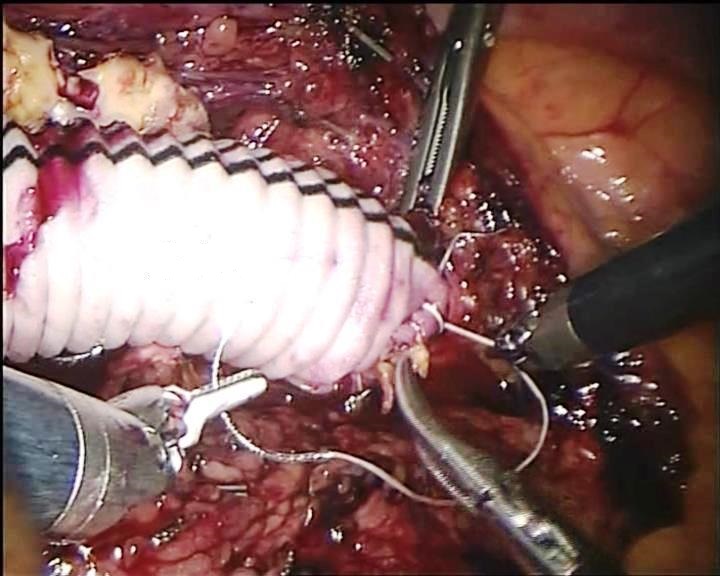Back to 2016 Annual Symposium ePosters
Robot-Assisted Vascular Surgery Procedures
Petr Stadler, Prof., M.D., Ph.D..
Na Homolce Hospital, Praha 5, Czech Republic.
OBJECTIVES:
The da Vinci system has been used by a variety of disciplines for laparoscopic procedures but the use of robots in vascular surgery is still relatively unknown. The feasibility of laparoscopic aortic surgery with robotic assistance has been sufficiently demonstrated. Our clinical experience with robot-assisted vascular surgery performed using the da Vinci system is herein described.
METHODS:
Between November 2005 and September 2015, we performed 342 robot-assisted vascular procedures. 245 patients were prospectively evaluated for occlusive diseases, 70 patients for abdominal aortic aneurysm (Fig.), four for a common iliac artery aneurysm, five for a splenic artery aneurysm, one for a internal mammary artery aneurysm five for hybrid procedures, three for median arcuate ligament release and nine for endoleak II treatment post EVAR.
RESULTS:
327 cases (95,6%) were successfully completed robotically, one patient's surgery (0,3%) was discontinued during laparoscopy due to heavy aortic calcification. In fourteen patients (4%) conversion was necessary. The thirty-day mortality rate was 0,3%, and early non-lethal postoperative complications were observed in six patients (1,75%).
CONCLUSIONS:
Our experience with robot-assisted laparoscopic surgery has demonstrated the feasibility of this technique for occlusive diseases, aneurysms, endoleak II treatment post EVAR, for median arcuate ligament release and hybrid procedures. 
Back to 2016 Annual Symposium ePosters
|






